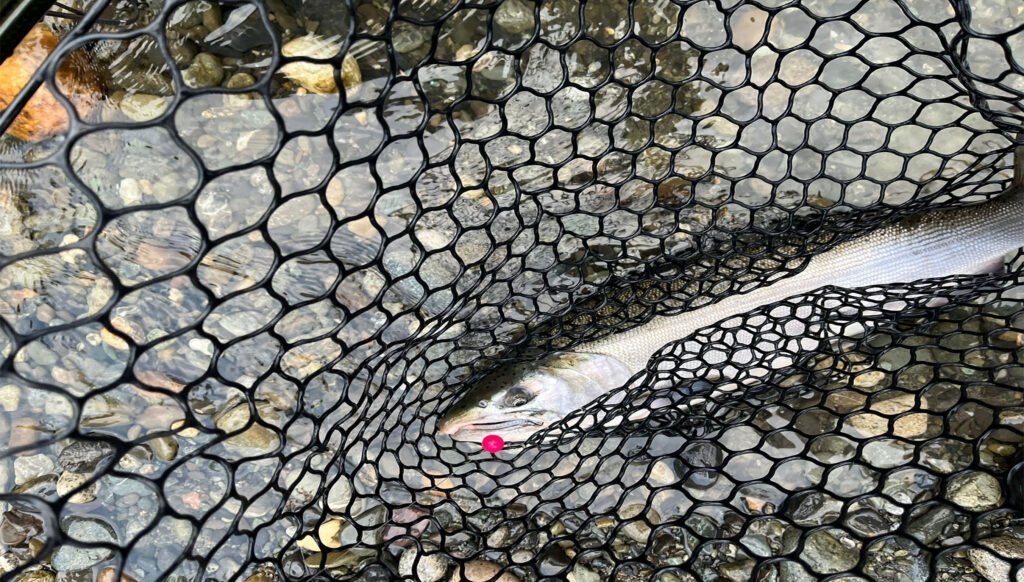The Science Behind Fishing Beads: Why Fish Are Attracted to Them

Fishing beads have become an essential tool in many anglers’ tackle boxes, but have you ever wondered why these small, colourful spheres are so effective at attracting fish? In this comprehensive guide, we’ll dive deep into the biology and behaviour of fish to uncover the science behind the allure of fishing beads. By understanding the reasons for their effectiveness, you can enhance your fishing strategy and increase your chances of a successful catch.
The Visual Appeal of Fishing Beads
Colour Perception in Fish
One of the primary reasons fishing beads are so effective is their ability to catch a fish’s eye. Unlike humans, who have three types of cone cells in their retinas, many fish species possess four or even five types of cone cells. This extra cone allows fish to see a broader spectrum of colours, including ultraviolet light, which is invisible to the human eye.
Research conducted by Dr Shelby Temple at the University of Bristol has shown that fish can distinguish between subtle variations in colour hues, particularly in the blue-green spectrum. This heightened colour perception plays a crucial role in how fish interact with their environment, including how they identify potential food sources.
The Role of Contrast
Fishing beads don’t just rely on colour alone; contrast is equally important. In varying water conditions, certain colours may stand out more than others. For example:
- In clear water, bright colours like chartreuse, orange, and hot pink create high contrast and visibility.
- In murky or stained water, darker colours like black, purple, or blue can create a more visible silhouette.
Fishing Beads that work well in stained water:
The ability of fishing beads to provide this contrast makes them highly visible to fish, even in challenging water conditions.
Mimicking Natural Food Sources

Roe Imitation
One of the most common uses of fishing beads is to imitate fish eggs or roe. Many fish species, such as salmon, trout, and steelhead, feed on the eggs of other fish. Fishing beads closely resemble these natural food sources in both size and appearance.
A study published in the Canadian Journal of Fisheries and Aquatic Sciences found that salmon were more likely to strike at lures that closely resembled the size and colour of their natural prey, including fish eggs. This research supports the effectiveness of using beads to mimic roe in fishing applications.
Insect and Larvae Imitation
Fishing beads can also imitate other small prey items that fish feed on, such as:
- Aquatic insect eggs
- Small crustaceans
- Fish fry
- Various larvae
By selecting beads that match the size, colour, and texture of these natural food sources, anglers can create highly effective lures that trigger a fish’s predatory instincts.
The Science of Fish Behaviour
Feeding Triggers
Fish have evolved to respond to specific stimuli that indicate the presence of food. These triggers can include:
- Movement
- Size
- Colour
- Shape
- Scent
Fishing beads excel at activating several of these triggers simultaneously. Their round shape and ability to move naturally in the water column mimic the movement of prey, while their size and colour match that of common food sources.
Curiosity and Investigative Behaviour
Not all strikes on fishing beads are solely motivated by hunger. Fish, particularly predatory species, have an innate curiosity that leads them to investigate unusual objects in their environment. This behaviour is thought to be an evolutionary adaptation that allows fish to identify new food sources and avoid potential threats.
Dr Victoria Braithwaite, a renowned fish biologist, has conducted extensive research on fish cognition and behaviour. Her work suggests that fish possess a level of intelligence and curiosity that drives them to explore their surroundings actively. Fishing beads, with their unique appearance and movement, can trigger this investigative behaviour, leading to strikes even when fish aren’t actively feeding.
The Physics of Fishing Beads
Hydrodynamics and Movement
The effectiveness of fishing beads isn’t just about their visual appeal; it’s also about how they move through the water. The spherical shape of fishing beads creates a unique hydrodynamic profile that affects how they drift and bounce along the bottom of a river or stream.
This movement closely mimics the natural drift of fish eggs or other small prey items, making the presentation more realistic to fish. The slight wobble or roll of a bead as it moves with the current can trigger a fish’s predatory instinct, enticing them to strike.
Sound and Vibration
Whilst often overlooked, the sound and vibration produced by fishing beads can play a significant role in attracting fish. As beads bounce along rocky bottoms or collide with other beads in a rig, they produce subtle sounds and vibrations in the water.
Fish have a highly developed sensory system called the lateral line, which allows them to detect minute vibrations and pressure changes in the water. This system helps fish locate prey and navigate their environment. The subtle sounds and vibrations produced by fishing beads can trigger this sensory system, alerting fish to the presence of potential food and drawing them in for a closer look.
Practical Applications and Techniques
Matching the Hatch
One of the key principles in effective fishing is “matching the hatch,” which involves using lures or bait that closely resemble the food sources currently available in the water. Fishing beads excel in this area due to their versatility.
By carefully selecting bead sizes and colours, anglers can match various stages of fish egg development, from freshly laid eggs to those about to hatch. This attention to detail can make a significant difference in catch rates, especially during spawning seasons when fish are keenly attuned to the presence of eggs in the water.
Combination Rigs
Experienced anglers often use fishing beads in combination with other lures or bait to create highly effective rigs. Some popular combinations include:
- Bead and Fly Combo: Pairing a bead with a small fly can mimic a fish egg that’s been invaded by an aquatic insect, a common occurrence in nature.
- Bead Chains: Using multiple beads of varying sizes and colours can imitate a cluster of fish eggs, which can be particularly effective during peak spawning seasons.
- Bead and Yarn: Combining a hard bead with soft yarn can create a presentation that appeals to both the visual and tactile senses of fish.
These combination rigs leverage multiple aspects of fish behaviour and sensory perception, increasing the chances of a successful catch.
Environmental Considerations
Whilst fishing beads are highly effective, it’s essential to consider their environmental impact. Many anglers are moving towards biodegradable or environmentally friendly bead options to reduce the potential for pollution in waterways.
Additionally, proper fishing techniques, such as using barbless hooks and practising catch-and-release, can help maintain healthy fish populations whilst still enjoying the sport.
Conclusion
The science behind fishing beads reveals a complex interplay of fish biology, behaviour, and environmental factors. By understanding the visual appeal, natural imitation, behavioural triggers, and physical properties of fishing beads, anglers can make more informed choices about when and how to use them effectively.
As with any fishing technique, success with beads comes from a combination of knowledge, experience, and adaptability. By staying attuned to the specific conditions of your fishing environment and the behaviour of your target species, you can leverage the science of fishing beads to improve your angling success.
Remember, whilst the allure of fishing beads is grounded in science, there’s always an element of art to fishing. Experiment with different colours, sizes, and techniques to discover what works best in your local waters. Happy fishing!








Add comment